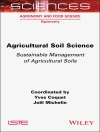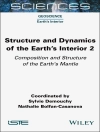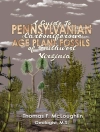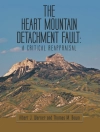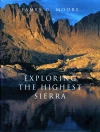The contributed volume assimilates the knowledge, experience, and exciting aspects of soil carbon research in the Indian Himalayan region. It includes different aspects and factors associated with soil carbon sequestration in the region, one of the biodiversity hot spots and highly vulnerable to climatic change impacts. Information on different aspects of soil organic carbon dynamics concerning adaptive land management practices and anthropogenic impacts is covered. Further topics include applying advanced tools and techniques to soil carbon vis-a-vis soil erosion research. This book is of interest to researchers and policymakers involved in soil carbon research and offer ideas to enhance the soil carbon in the region concerned. In addition, the book will provide up-to-date information for researchers interested in soil carbon research for the maintenance of soil quality and fertility in the climate-vulnerable Indian Himalayan region.
สารบัญ
Chapter 1. An Overview of Soil Carbon Sequestration and Food Security in the Indian Himalayan Region.- Chapter 2. Soil C sequestration in Himalayan landscape: Impacts of vegetation and edaphic interactions under changing climate.- Chapter 3. Soil Carbon Stock along an Altitudinal Gradient in the Indian Himalayas.- Chapter 4. Impact of Land Uses on Soil Organic Carbon Dynamics in the Indian Himalayan Region.- Chapter 5. Terrestrial Carbon Stock and Sink Potential of Indian Himalayan Forest Ecosystem: A Tool for Combating Climate Change.- Chapter 6. Conservation Agriculture for Soil Health and Carbon Sequestration in the Indian Himalayan Region.- Chapter 7. Establishing Linkages of Soil Carbon Dynamics with Microbes Mediated Ecological Restoration of Degraded Ecosystem in Indian Himalayan Region.- Chapter 8. Harnessing soil ecosystem services for achieving soil based SDGs in Indian Himalaya.- Chapter 9. AFOLU Sectors of North East India and Their Potential for Soil Carbon Storage.- Chapter 10. Soil Microbial Carbon Pools as an Indicator of Soil Health in Different Land Use Systems of North East India.- Chapter 11. Bamboo Resources in Karbi Anglong District of Assam and Their Role in Soil Carbon Management.- Chapter 12. Land Use Change and its Impacts on Soil Carbon Dynamics in Mizoram, Northeast India.- Chapter 13. Vegetation and Recalcitrant Soil Carbon Recovery along an Age Chronosequence of Jhum Fallows in North East India.-Chapter 14. Soil Organic Carbon Modelling in Indian Eastern Himalayan region: A Review of Case Studies.- Chapter 15. Digital Mapping of Soil Carbon: Techniques and Applications.- Chapter 16. Geospatial Analysis of Soil Organic Carbon Dynamics in the Indian Himalayas.- Chapter 17. Spatial Monitoring of Soil Health Using Remote Sensing of Distinct Land Cover in the Central Himalayan Region Using GEE Platform.- Chapter 18. Digital mapping of soil organic carbon using legacy data in North east Himalayas.- Chapter 19. Use of Advanced Techniques to Estimate Soil Erosion and Associated Carbon Loss in the Himalayan Region.- Chapter 20. Soil Carbon Pools in Different Land Use Systems in Indian Himalayan Region and Their Role in Climate Change Mitigation and Ecological Sustainability.
เกี่ยวกับผู้แต่ง
Gaurav Mishra is currently working as Scientist in the Centre of Excellence on Sustainable Land Management at the Indian Council of Forestry Research and Education, Dehradun (Uttarakhand). He is a soil scientist and his research interests include soil quality assessment, sustainable land management, digital soil mapping, soil carbon dynamics and carbon modeling at the regional level.
Krishna Giri is presently working as Scientist-D in the Centre of Excellence on Sustainable Land Management at the Indian Council of Forestry Research and Education, Dehradun, India, and did M. Sc. and Ph.D. in Environmental Science from G.B. Pant University of Agriculture and Technology, Pantnagar, Uttarakhand, India. He has worked on Soil Microbiology associated with Shifting Cultivation Land use systems, soil microbiome analysis of Himalayan Alder-based agroforestry, and other traditional farming systems in Nagaland state.
Arun Jyoti Nath is an Associate Professor of Ecology and Environmental Science at the Assam University. He is an ecologist with a diverse experience in research and teaching. He has over 15 years’ experience in carbon dynamics research. His research interest includes mitigation, sustainability, ecosystem carbon dynamics at regional, and landscape scale. Dr. Nath has authored more than 100 scientific, technical, and educational publications.
Rosa Francaviglia, with expertise in agronomy, is a senior researcher at the Councilfor Agricultural Research and Economics, Research Centre for Agriculture and Environment, in Rome, Italy, since 1981 (now retired). Her main research topics include the effectsof climate change on agriculture, carbon sinks and agricultural soils, soil organic carbon simulationmodels, soil fertility, conservation agriculture, crop diversification, agro-environmental evaluations, soil quality indicators, and good agro-environmental conditions (GAEC) under the EU Common Agricultural Policy.






